Ramen is a classic Japanese dish that is popular all over the world. But some of the best ramen restaurants are found in Tokyo including Nakiryu and Menokoro Haru.
In this article we will explore the very best ramen restaurants that Tokyo has to offer, covering the different types of ramen, the culinary awards won by the various restaurants as well as how to find them.
Ramen in Tokyo
If you are a ramen lover then Tokyo is certainly one of the best places in all of Japan to find the perfect bowl of ramen. There are many different ramen restaurants that are popular with both locals and tourists. But how do you tell a good ramen restaurant from a bad one?
Just because a restaurant is busy and has long lines outside does not necessarily mean that it offers the best ramen, the price may just be right. Some of the best ramen restaurants have been awarded Michelin stars whereas others are lesser-known small eateries that still produce some of the best ramen in Tokyo.
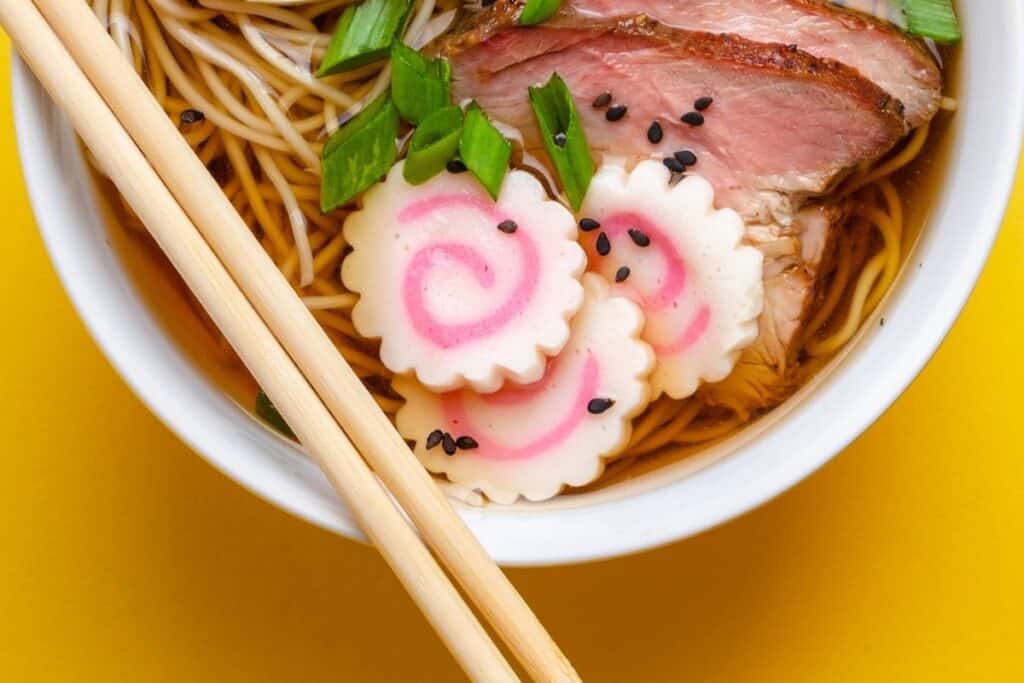
So, to find out more about the best Tokyo establishments to eat ramen in Tokyo, keep reading and explore these shops with us.
Nakirya – a Michelin star restaurant
Without a doubt, if you are on the hunt for a fantastic bowl of ramen you should make a trip to Nakirya which has been awarded one Michelin star. In fact, it was the first Japanese ramen restaurant to be awarded such an honor.
Since its award the restaurant has gained a lot of popularity, meaning that it can sometimes take up to 2 hours to be seated. However, the ramen is worth the wait.
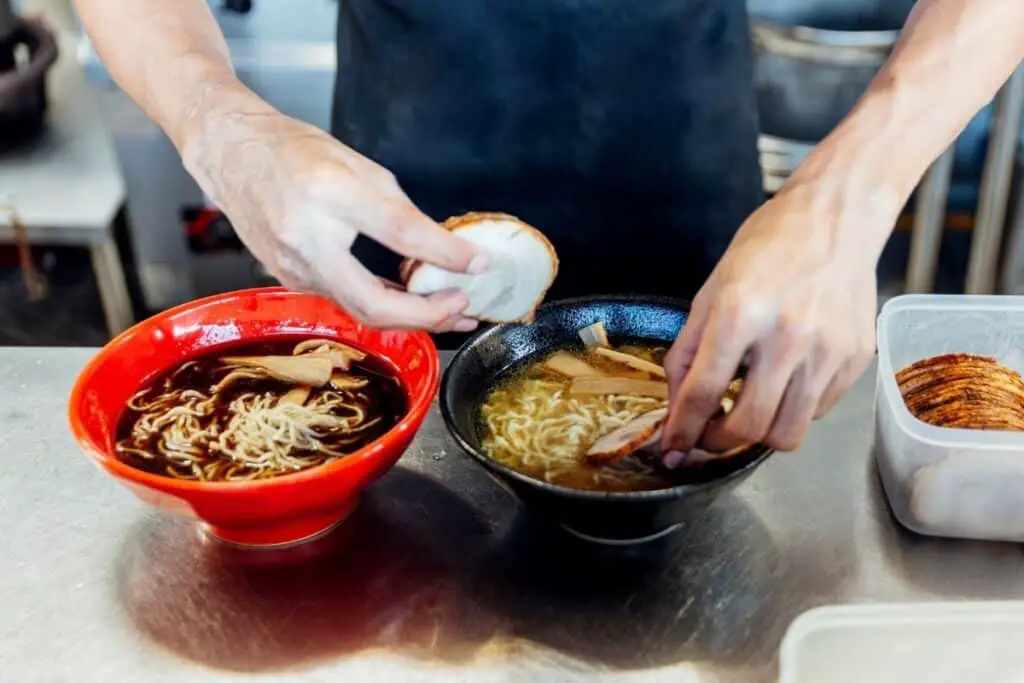
Their specialty is shoyu ramen which is topped with three different types of barbecued pork as well as shrimp wonton, salted bamboo shoots, a soft-boiled egg, and finished with green onions.
The restaurant is located 5 minutes from JR Otsuka Station. Please know that credit cards are not accepted at Nakirya and it is not possible to make a reservation. You will simply need to try your luck and show up when you want to eat.
Mendokoro Haru – a soba special
Opened in 2012, Haru is a restaurant that specializes in a ramen bowl consisting of soba noodles, soy sauce, chashu pork, bamboo shoots, seaweed, egg, and green onion.
Every texture in this ramen is carefully thought out to ensure that the softness of the noodles is matched by the crunchiness of the seaweed and tenderness of the pork.
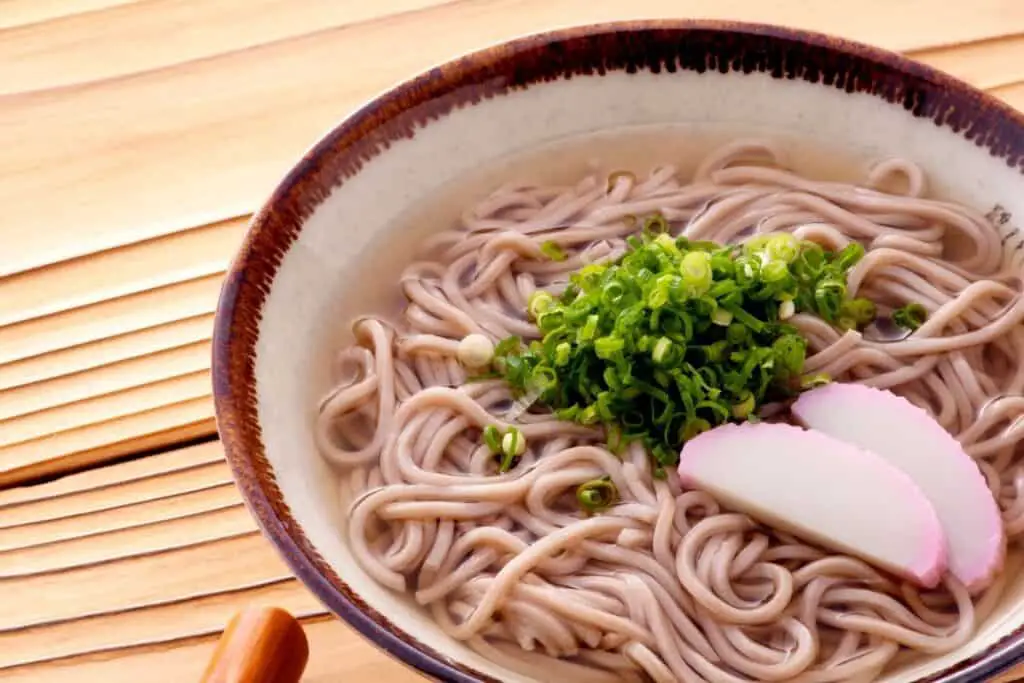
If one bowl is simply not enough you can get a “refill” on your ramen for only 200 yen.
This restaurant is only one minute away from Iriya Station. Haru is open for two seating times, one at lunch between 11 a.m. and 3 p.m. and one at dinner between 6 p.m. and 9 p.m. On the weekend, Haru is open non-stop from 11 a.m. until 5 p.m.
Mendokoro Haru Via Tripadvisor
Ushio – a fusion of traditional and modern
Also opened in 2012, Ushio puts modern twists on classic ramen recipes to truly provide you with the best flavors possible.
They became very well known for their Nihon-ichi shoyu ramen made with soba noodles. This dish is topped with unpasteurized soy sauce, pork shoulder, a mix of vegetables, egg, and three slices of smoked duck on the side.
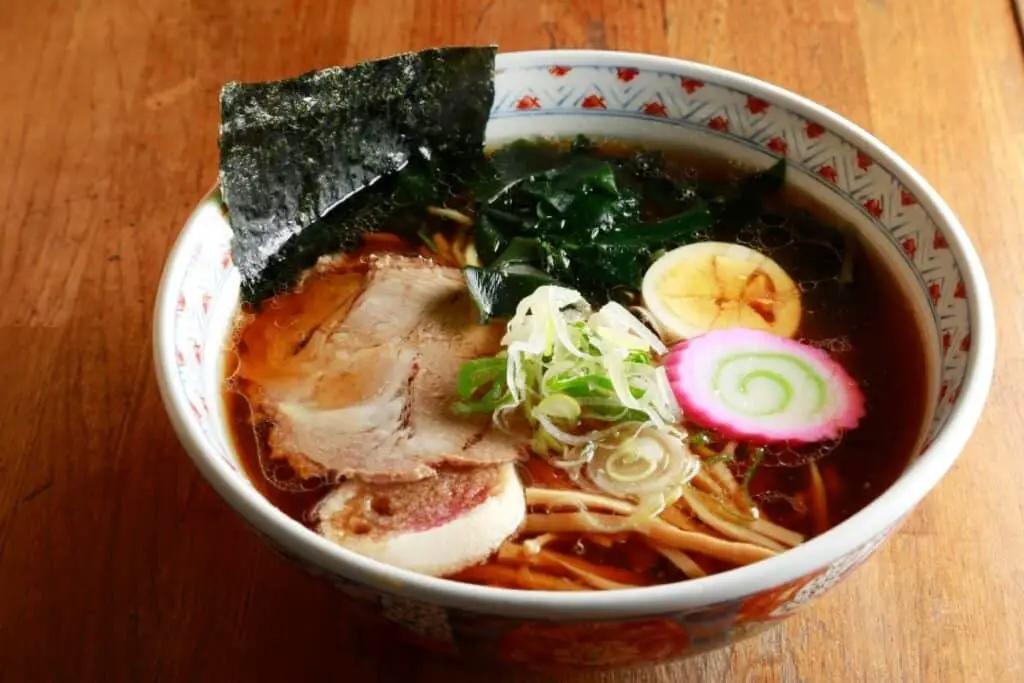
Their famous ramen is rich in the umami flavor, giving it a unique taste like no other that you’ve tried before.
Ushio is open daily Monday through Saturday from 11 a.m. to 7 p.m. but you may find that the restaurant has closed earlier than this if they have run out of soup. Please note that credit cards are not accepted.
However, despite being in a busy area you will not usually need to wait for long before being seated. This allows you a quiet escape from the busy city where you can truly enjoy some of the best ramen that Tokyo has to offer.
Ushio Ramen Shop Via Trip Advisor
Toripaitan Kageyama – the best Japanese chicken soup
The restaurant Toripaitan Kageyama is best known for its chicken ramen bowl called tori paitan. The ramen is made up of chewy noodles, steamed chicken, part-boiled egg, lettuce, and a thick, creamy broth.
The soup itself is very mellow in flavor which is why you will find it accompanied by a slice of lemon to add at your discretion to give your meal a bit of citrus flavor.
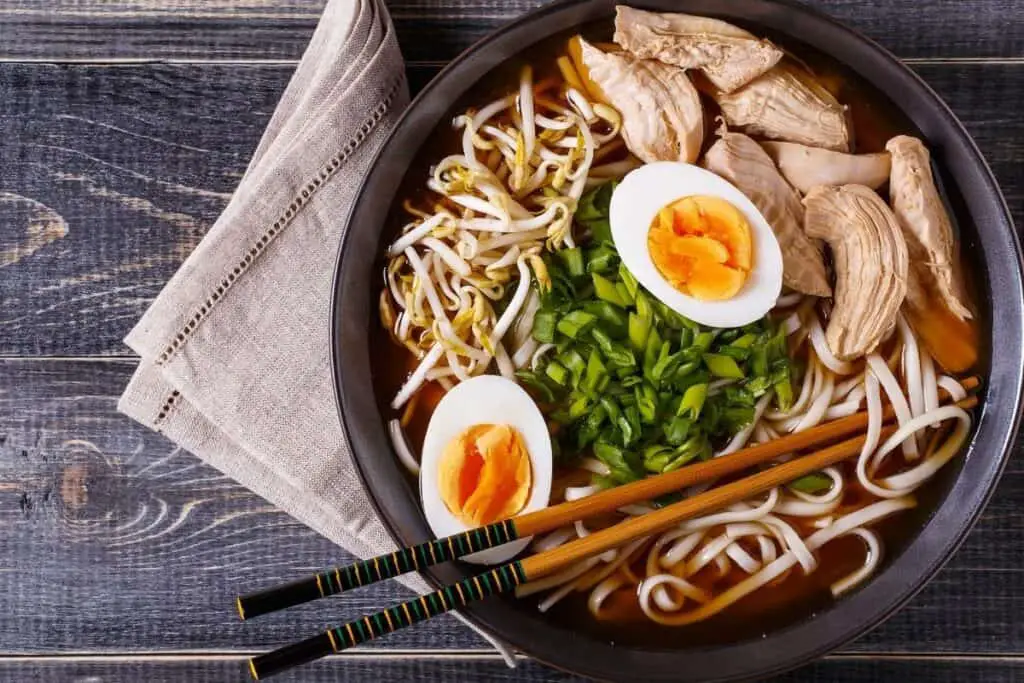
One of the reasons why this restaurant is so fantastic is because it is managed by the top restaurant Kageyamaro.
The restaurant is a short walk from JR Takadanobaba Station and is open daily from 11 a.m. until 11:30 p.m. The restaurant closes one hour earlier on Sundays.
Toripaitan Kageyama Via Tripadvisor
Seitokudo – a small, hidden ramen cafe
Hidden in a small back street in Koen-dori, on the second floor of a small building is Seitokudo, a small ramen cafe. The restaurant is very popular with tourists, despite its hidden-away location, as it offers an English menu and relaxed atmosphere.
The reason for its popularity is just how delicate their ramen is. Their ramen soup is a mix of meat broth (either from pork or chicken) and a fish broth.
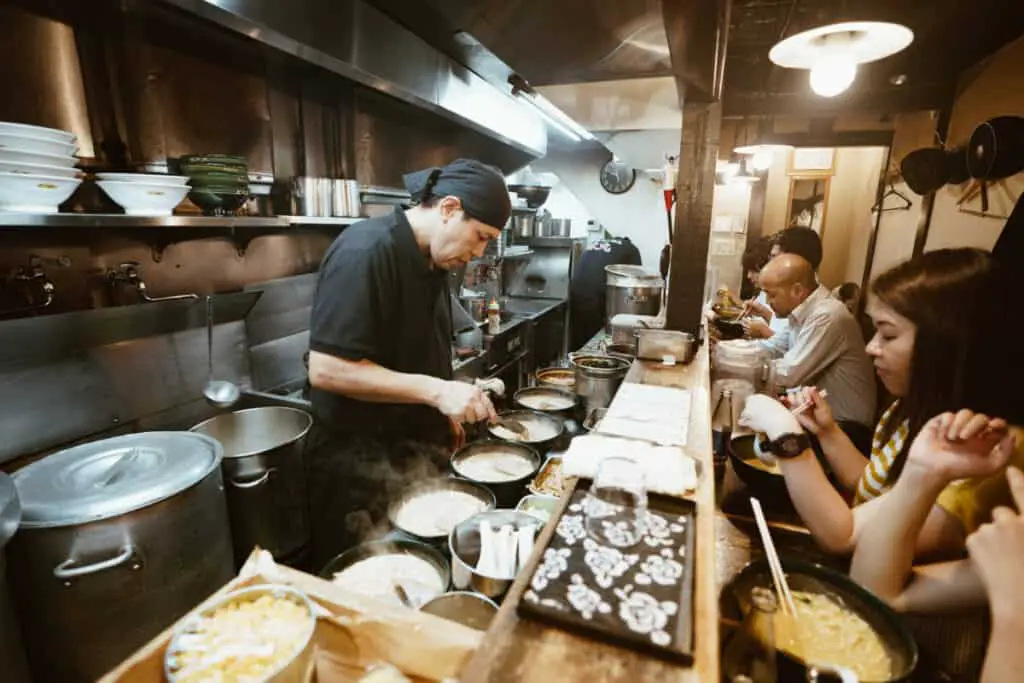
Then a mix of traditional vegetables is included along with the more unusual ingredient of black beans, giving the ramen a sweeter flavor.
Tsuta – the Second Japanese Michelin Star restaurant
Tsuta was the second restaurant in Japan to be awarded the high honor of a Michelin Star and they certainly earned that award for a reason – their perfected ramen.
The head chef, Onishi-san, created the restaurant’s specialty ramen SHOYU which is a combination of miso ramen, salt, and soy sauce. The aged soy sauce (aged in a barrel for two years) adds a deep and complex flavor to the bowl.
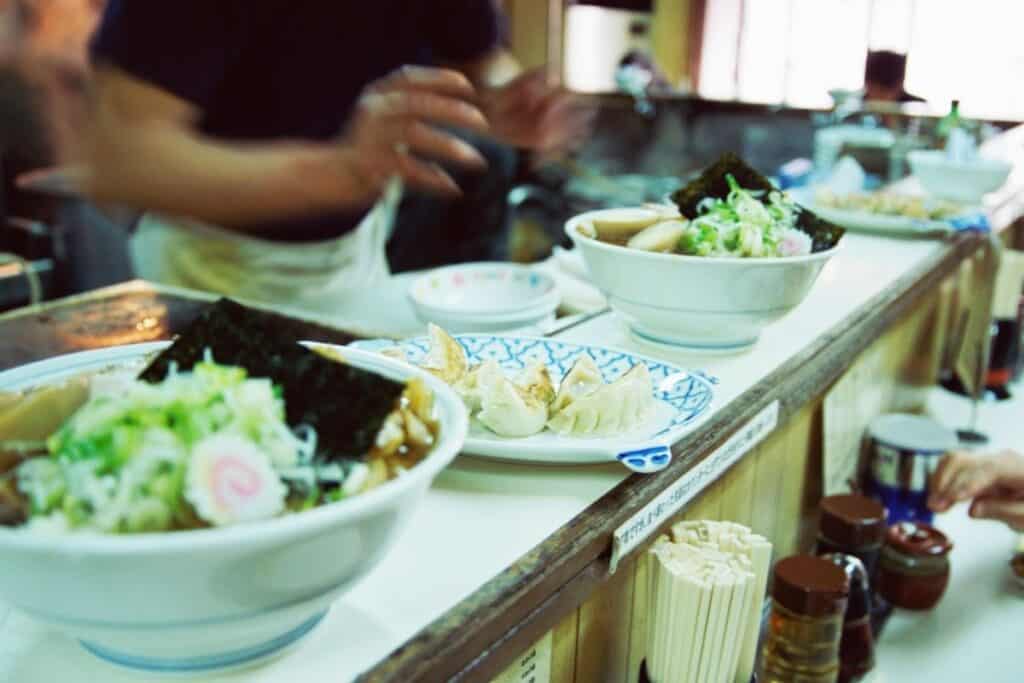
The rest of the bowl consists of chicken, clams, vegetables, kelp, and dried fish. You can choose the cheaper, simpler version of this dish or you can order the best and add black truffle and pork for a total of 3550 yen.
Tsuta Ramen Shop Official Website
Soba House – a ramen house in a tourist district
Soba House is another restaurant that has been awarded a Michelin Star, this time in 2018. The restaurant is found in Shinjuku making it a very desirable ramen spot for tourists.
Although they offer both Shoyu and Shio ramen the latter is the most popular option. The light ramen is a perfect combination of sea and land ingredients, combining clams, pork, and chicken, and is slightly salty in taste.
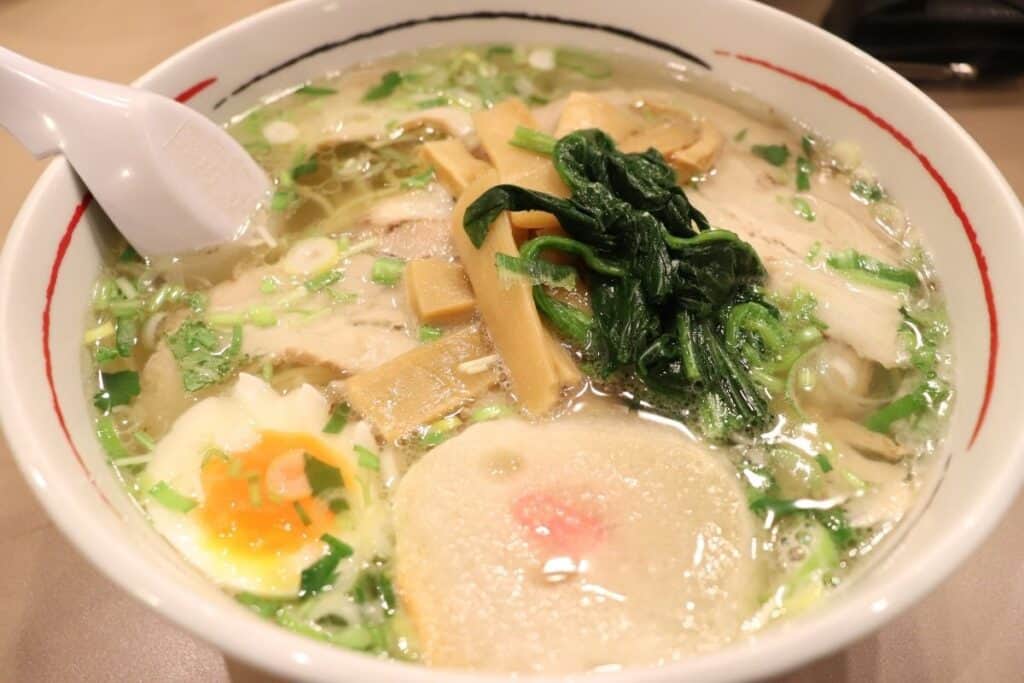
The restaurant makes each bowl their own with the inclusion of housemade truffle oil and mushroom oil.
Note that there are no menus and you order from a vending machine which is written in Japanese.
Soba House Ramen Shop Via Tripeadvisor
Jinanbo – the best for Hakata ramen
The specialty of Jinanbo restaurant is Tonkotsu ramen which is made up of pork broth, a part-boiled egg, and a variety of other traditional toppings.
The key to this ramen is that the pork bone broth is left to slow cook for hours, allowing the water to bring out and enhance all of the flavors.
Jinanbo Ramen Shop Via Tripadvisor
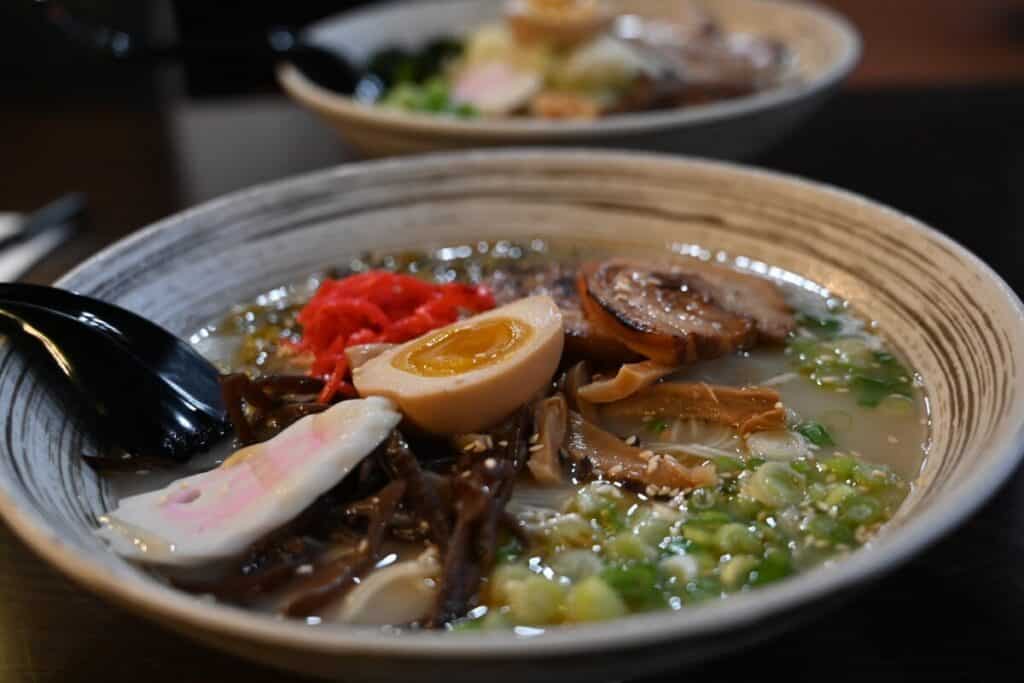
Ichiran – an international chain
Ichiran is a chain of ramen restaurants that has expanded internationally, opening shops in both Hong Kong and the US. This has gained Ichiran fans from all over the world, not only from Japan.
Their main recipe has taken them many years to perfect and includes a pork broth that is topped with over 30 different ingredients which are left to cook for a few days at a time.
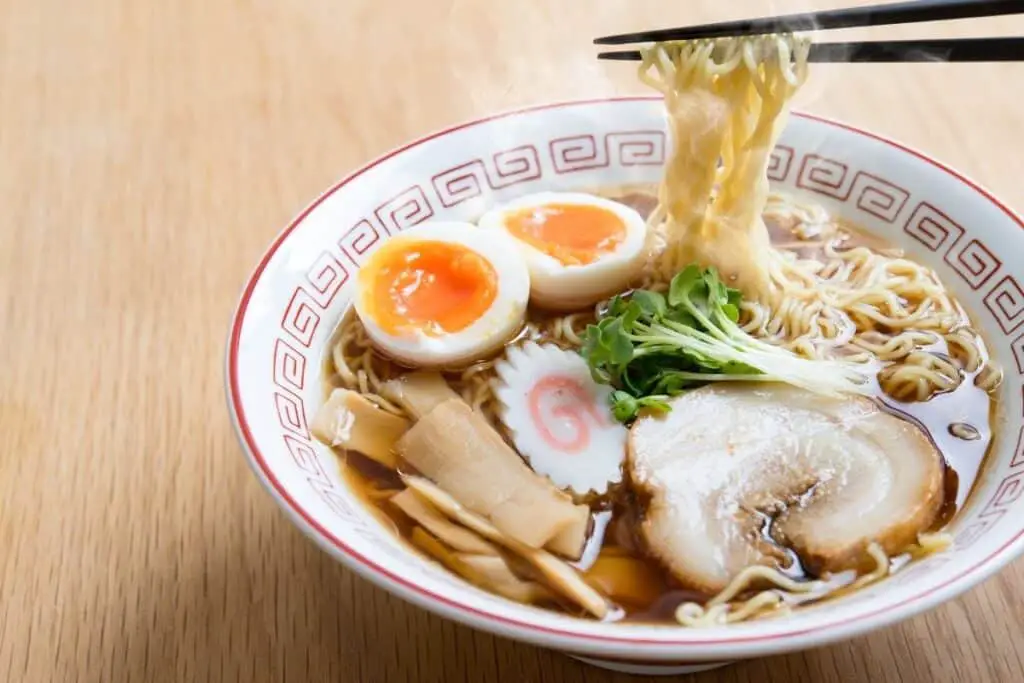
This recipe is a closely-guarded secret that is restricted to only four people in the whole of Japan. Every new recipe is approved by the chefs before it is rolled out into their various stores, meaning that every bowl of ramen is specialized and master chef-approved.
Ippudo – an international favorite
Originally from Fukuoka, Ippudo has expanded its reach to many international locations, including Tokyo.
They have become a world favorite thanks to their use of thin, housemade noodles with a deep wheat flavor, making the ramen full-bodied in taste.
Their recipe has been perfected over a period of 30 years, creating a light yet a full-of-flavor bowl of ramen.
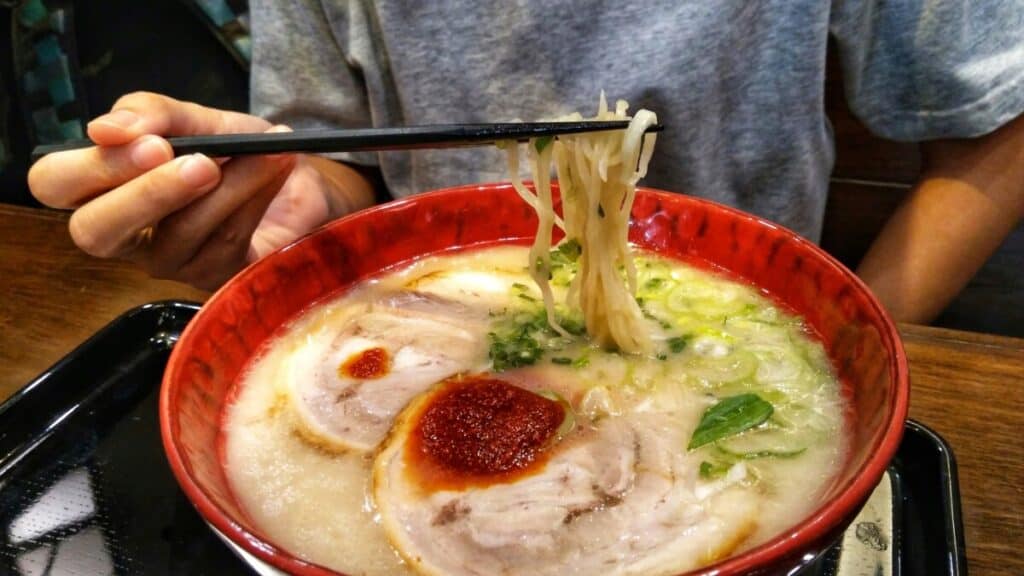
In fact, the pork broth is cooked for 18 hours with the bones in a specialized pot and then allowed to simmer for the rest of the day.
Their most popular ramen is called Akamaru Shinaji which uses housemade spice oil which coats your entire mouth with flavor and perfectly compliments the deep wheat flavor of the noodles.










